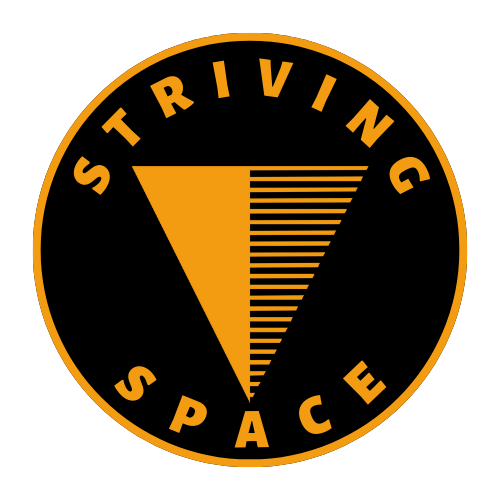Apple’s Vision Pro is a device that combines virtual and augmented reality, allowing it to recognize and understand images and scenes. This opens up a range of possibilities beyond just entertainment and gaming. If you’re a developer, entrepreneur, or someone with strong analytical skills, the Apple Vision Pro could be the key to unlocking new revenue streams. There are many potential opportunities to generate income with this technology, and it’s up to you to explore and capitalize on them.

Disclosure: I may earn a small commission if you buy something through my links in this content. This helps support my work, but my opinions and reviews are independent, not influenced by any affiliate partnerships.This guide explores four possible ways to turn your Vision Pro “skills” into income:
- Build Vision Pro apps: We’ll look at different app ideas, see if they’re realistic, who would use them, how big the market is, and what programming skills you’ll need.
- Offer Vision Pro services: You can freelance your knowledge, consult with businesses, or even train others. We’ll break down who needs these services, how big the market is, and what technical skills you’ll need for each option.
- Create and sell custom machine learning models: These models can be used for specific tasks in certain industries. We’ll explain how to build them, who might buy them, how big the market is, and what technology you’ll need.
- Use Vision Pro for data analysis: You can analyze images and videos for valuable insights in areas like market research or medical imaging. We’ll explore if this is realistic for different situations, who might benefit from it, how big the market is, and what skills you’ll need.
Let’s explore the potential of this powerful technology. We’ll focus on practical details like feasibility, target markets, market size, and the specific technical skills you need for each path. This will help you make informed decisions and maximize your earning potential.

I. Developing and Selling Vision Pro-powered Apps:
Accessibility Apps
Feasibility: High. Vision Pro’s object recognition and scene understanding capabilities are well-suited for accessibility applications. However, the development process requires expertise in AR/VR development and accessibility guidelines.
Target Market: Visually impaired individuals (2.2 billion globally), their families, caregivers, and organizations supporting them.
Market Size: $13.8 billion in 2022, expected to reach $29.2 billion by 2027.
Tech Needs: AR/VR development tools (Swift, ARKit), accessibility expertise, machine learning models for object and scene recognition, text-to-speech and speech-to-text technologies.
Augmented Reality Experiences
Feasibility: Moderate. While Vision Pro’s capabilities are promising, the AR development landscape is still evolving. Consider the complexity and niche appeal of your experience.
Target Market: Varied depending on the experience. Examples include students (educational AR), gamers (interactive games), tourists (augmented travel guides).
Market Size: $27.5 billion in 2022, expected to reach $210.8 billion by 2027.
Tech Needs: AR/VR development tools (Swift, ARKit), 3D modeling and animation skills, creative design expertise, depending on the specific experience.
Retail and Product Inspection Apps
Feasibility: High. Vision Pro’s image recognition and barcode scanning capabilities are ideal for these tasks. However, consider industry-specific regulations and data security concerns.
Target Market: Retailers, manufacturers, logistics companies, quality control professionals.
Market Size: $13.4 billion in 2022, expected to reach $28.6 billion by 2027.
Tech Needs: AR/VR development tools (Swift, ARKit), computer vision expertise, barcode scanning libraries, data security protocols.
Things to considers:
Competition: Each of these areas has existing competitors. Research them thoroughly to identify gaps in the market and differentiate your app.
App Store Approval: Ensure your app meets Apple’s App Store guidelines for accessibility, AR experiences, and data privacy.
Marketing and Distribution: Develop a marketing strategy to reach your target audience and leverage the Apple Developer Program for distribution.
Probability of success depends on strong execution, a clear value proposition, and meeting the specific needs of your target market.

II. Offering Apple Vision Pro Development Services:
Freelance Development
Feasibility: Feasibility depends on your expertise in iOS development, specifically Vision Pro. Building complex apps will require advanced skills.
Target Market: This service is ideal for businesses and individuals looking to integrate Vision Pro into their iOS apps. It could include companies in diverse industries like retail, healthcare, education, and gaming, or independent developers with specific project needs.
Market Size: The overall iOS app development market is vast, valued at $85.9 billion in 2022. There’s no data for visionOS yet, but judging from the growing adoption of Vision Pro, there will be a huge demand for specialized developers.
Tech Needs: Candidates must have a strong proficiency in Swift, Xcode, and iOS development practices. They should also have a deep understanding of Vision Pro APIs and frameworks. They might need additional skills relevant to the specific project, such as AR/VR development (ARKit), machine learning, data analysis, etc.
Consulting
Feasibility: This service is moderately feasible and requires solid business acumen and expertise in both Vision Pro and the target industry. Understanding business needs and translating them into technical solutions is crucial.
Target Market: This service is suited for businesses contemplating the potential of Vision Pro and seeking guidance on implementing it. It could be companies across various industries like retail, manufacturing, healthcare, or tech startups exploring innovative applications.
Market Size: The global AI consulting market is projected to reach $34.9 billion by 2027, indicating potential for specialized Vision Pro consulting services.
Tech Needs: Candidates should have business acumen, strong understanding of Vision Pro capabilities and limitations, knowledge of relevant industry trends and pain points, effective communication, and presentation skills. Additional technical expertise might be needed depending on the specific client and project scope.
Training
Feasibility: This service is moderately feasible and requires strong pedagogical skills and a deep understanding of Vision Pro to create engaging and informative training materials.
Target Market: This service is ideal for developers and businesses new to Vision Pro seeking to learn its functionalities and build skills. It could be individual developers, internal teams within companies, or training institutions looking to expand their curriculum.
Market Size: The global AI training market is expected to reach $19.2 billion by 2026, highlighting the demand for specialized training.
Tech Needs: Candidates should have excellent communication and presentation skills, the ability to create engaging learning materials (e.g., workshops, online courses), a deep understanding of Vision Pro and its technical aspects, and experience in adult learning methodologies.
Things to considers:
Competition: Each service area has existing competition. Highlighting your unique expertise, experience, and value proposition is essential to stand out.
Marketing and Networking: Building a strong online presence, attending industry events, and actively networking are crucial for attracting clients.
Pricing Strategy: Developing competitive pricing models based on your expertise, project scope, and target market is vital.
The success probability in offering Vision Pro development services depends on your unique skills, targeted marketing, and a deep understanding of both the technology and the client’s needs.
III. Creating and Selling Machine Learning Models with Vision Pro:
Creating and selling machine learning models with Vision Pro involves two main approaches: training custom models and contributing to open-source models.
Training Custom Models
Feasibility: The feasibility of training custom models depends on your expertise in machine learning, data science, and integrating with Vision Pro. Training effective models requires high-quality data and computational resources.
Target Market: This approach is suitable for businesses in specific industries requiring customized object or scene recognition beyond what pre-trained models offer. Examples include manufacturing (defect detection), healthcare (medical image analysis), retail (product identification), and agriculture (crop monitoring).
Market Size: The market for custom machine learning model development is expected to reach $18.9 billion by 2027, highlighting significant potential.
Tech Needs: To train custom models, you need strong expertise in Python, machine learning libraries such as TensorFlow and PyTorch, data science practices, cloud computing platforms like AWS or Azure, and Vision Pro API integration. Knowledge of specific domain expertise relevant to the target industry is also valuable.
Contributing to Open-Source Models
Feasibility: Contributing to open-source models requires strong machine learning and programming skills but benefits from collaborative effort and shared resources. Contributing effectively demands high-quality code and documentation.
Target Market: This approach caters to the developer community working on Vision Pro-related projects and individuals/businesses seeking free, accessible models for various tasks.
Market Size: The open-source machine learning market is rapidly growing, reaching $5.8 billion in 2022. Contributing to relevant models can increase your visibility and attract potential collaborators or clients.
Tech Needs: To contribute to open-source models, you need expertise in Python, machine learning libraries, contributing to open-source projects, and strong coding practices. Understanding community needs and aligning your contribution with existing efforts is crucial.
Things to considers:
Competition: Both custom and open-source models face competition. Focus on unique value propositions, industry specialization, and model performance to differentiate yourself.
Data Acquisition: High-quality and relevant data is critical for training effective models. Consider data licensing, partnerships, or synthetic data generation strategies.
Marketing and Distribution: Develop strategies to reach your target market, showcase your models, and build trust within the developer community.
Success in creating and selling machine learning models depends on your technical expertise, domain knowledge, ability to address specific needs, and effective marketing strategies.

IV. Using Apple Vision Pro for Data Analysis and Research:
Market Research
Feasibility: Moderate to high. This application requires expertise in data analysis, computer vision, and understanding marketing research methodologies. Vision Pro can effectively analyze images and videos, but interpreting results and drawing insights requires domain knowledge.
Target Market: Market research firms, advertising agencies, brands, and individual researchers studying consumer behavior, product sentiment, and brand perception.
Market Size: The global market research industry is valued at $76.8 billion in 2022, with growing demand for advanced data analysis techniques.
Tech Needs: Expertise in Python, data analysis libraries (Pandas, NumPy), computer vision libraries (OpenCV, scikit-image), ability to access and process social media data ethically, and strong visualization skills.
Medical Imaging Analysis
Feasibility: High potential but complex. This application requires extensive medical expertise and collaboration with healthcare professionals. Regulatory compliance and data privacy are crucial considerations.
Target Market: Healthcare institutions, medical imaging companies, and researchers developing tools for diagnosis, treatment planning, and medical image analysis.
Market Size: The global medical imaging market is expected to reach $45.8 billion by 2027, highlighting significant potential for AI-powered solutions.
Tech Needs: Strong medical expertise, understanding of relevant medical imaging modalities (X-ray, MRI, etc.), deep learning libraries (TensorFlow, PyTorch), familiarity with regulatory requirements (HIPAA), and collaboration with healthcare professionals.
Environmental Monitoring
Feasibility: Moderate to high. This application depends on the specific task and data availability, and requires expertise in remote sensing, computer vision, and understanding environmental monitoring challenges.
Target Market: Environmental agencies, research institutions, NGOs, and companies involved in environmental monitoring, conservation, and sustainability efforts.
Market Size: The global environmental monitoring market is expected to reach $30.7 billion by 2027, reflecting growing demand for advanced monitoring solutions.
Tech Needs: Expertise in remote sensing data (drones, satellites), computer vision libraries, geospatial analysis tools (GIS), understanding of relevant environmental monitoring methodologies, and collaboration with domain experts.
Things to considers:
Data Privacy and Security: Ensure ethical data collection practices and robust data security measures for all scenarios.
Interpretability and Explainability: Develop models that provide clear and interpretable results, especially for medical applications.
Collaboration and Partnerships: Partnering with domain experts and organizations is crucial for successful implementation and impact.
The probability of being success in using Vision Pro for data analysis and research depends on your expertise, chosen application, data quality, and ethical considerations. Building trust and collaborations within relevant fields is key to maximizing the impact of your work.

V. Partnership Program:
Apple Developer Program
This program requires strong technical skills, a well-defined project idea, and alignment with Apple’s vision for Vision Pro. It is competitive to get accepted.
Developers and businesses with innovative ideas that leverage Vision Pro’s capabilities in unique ways are the target market. This could include companies developing AR/VR experiences, accessibility tools, or industry-specific applications.
It is difficult to know the size of the market directly, but the Apple Developer Program has over 29 million members globally, indicating a vast potential reach.
Strong expertise in Swift, Xcode, and iOS development is needed, as well as a deep understanding of Vision Pro API and frameworks. A clearly defined project proposal showcasing technical feasibility, innovation, and alignment with Apple’s goals is a must.
Partnering with Industry Leaders
This requires strong communication, business acumen, and a clear value proposition for your Vision Pro expertise. Companies in specific industries facing challenges that Vision Pro can address are the target market. Examples include retailers seeking improved inventory management, manufacturers requiring automated quality control, or healthcare providers exploring AI-powered medical image analysis.
The market size varies by industry. For instance, the global retail market is valued at $25.03 trillion, healthcare at $8.4 trillion, and manufacturing at $13.8 trillion, highlighting the vast potential across diverse sectors.
Expertise in Vision Pro and its application to the specific industry is needed. Understanding of the partner’s needs, pain points, and existing technology landscape is also necessary. Strong communication and presentation skills to effectively convey your value proposition are a must
Success in partnering for Vision Pro projects depends on your technical skills, industry knowledge, communication abilities, and a strategic approach to identifying and engaging the right partners. Build strong relationships, showcase your value proposition, and be prepared to adapt your approach to different industry contexts.

Turn Your Vision Pro Skills into Income – Actionable Steps
This guide provides a roadmap to unlock the earning potential of Vision Pro through different paths, such as developing apps, offering consulting services, creating custom machine learning models, and using Vision Pro for data analysis.
Here’s what you can do next:
- Connect with potential clients, partners, and collaborators in your chosen field. Attend industry events or join online communities.
- Showcase your Vision Pro skills, successful projects, and unique insights to attract potential partners.
- Research each potential partner’s specific needs and challenges to propose a customized solution that resonates with them.
- Reflect on your strengths, interests, and available resources. Choose the path that best aligns with your skills and goals.
- Deep dive into the feasibility, target market, market size, and specific technical requirements for your chosen path. Utilize the information provided in this guide as a starting point.
- Upskill yourself through online courses, open-source projects, or personal projects to build a strong foundation.
- Keep up with the latest advancements in Vision Pro and explore its evolving capabilities to stay ahead of the curve.
Follow these actionable steps to transform your Vision Pro knowledge into tangible income streams. Success requires dedication, continuous learning, and adapting to the ever-changing tech landscape. Start small, test different approaches, and refine your strategy as you progress. Take action and build a fulfilling and lucrative future with the power of Vision Pro!
Visit visionOS Apple Developer resource page to learn more about this cool technology.












